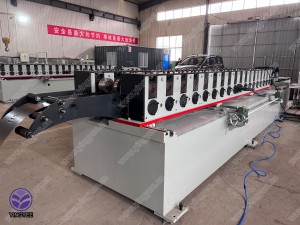
Understanding the Cost of Sandwich Panel Production Lines
Sandwich panel production lines have become increasingly essential in the construction and manufacturing sectors, known for their efficiency in producing insulated panels that have a wide range of applications. Industries such as construction, cold storage, and refrigeration heavily rely on these panels due to their durability, energy efficiency, and ease of assembly. As the demand for sandwich panels rises, so too does the interest in the production lines that manufacture them. This article will explore the factors that influence the price of sandwich panel production lines.
Components of Sandwich Panel Production Lines
A typical sandwich panel production line consists of several key components that work in unison to produce high-quality panels. These components include the following
1. Foam Injection System The heart of the production line, this system injects insulation materials (usually polyurethane or polystyrene foam) between two outer layers of metal, creating a strong and lightweight panel.
2. Roll Forming Machine This machine shapes the metal sheets into the desired profile before they are bonded with the insulating core.
3. Cutting Machines After the panels are formed, they need precise cutting to specific lengths that suit various applications.
4. Pressing Equipment To ensure the foam adheres properly to the outer metal layers, pressing equipment applies consistent pressure throughout the curing process.
5. Conveyor Systems These systems facilitate the movement of materials and finished products along the production line, enhancing efficiency.
Price Influencing Factors

1. Production Capacity One of the primary factors affecting the price of a sandwich panel production line is its production capacity. Lines designed to produce larger quantities will typically cost more due to the heavier machinery and more complex setup required.
2. Material Specification The type and quality of materials used in the production line influences cost. Higher-grade metals and advanced foam injection technologies can raise the initial investment but may lead to better long-term returns through efficiency and product quality.
3. Automation Level Fully automated production lines are more expensive upfront than semi-automated or manual lines. However, automation usually results in reduced labor costs and fewer human errors, which can be beneficial in the long run.
4. Brand and Manufacturer The reputation of the manufacturer can significantly impact the price. Established brands may charge a premium for their equipment, reflecting years of reliability, customer support, and proven technology.
5. Customization Tailored production lines designed to meet specific business needs will increase the overall cost. Custom features may include advanced control systems, specialized cutting or shaping tools, and unique handling systems.
Market Trends and Expectations
As the global construction market continues to grow, including developments in energy-efficient building materials, the demand for sandwich panels is expected to rise steadily. This trend is likely to influence the pricing of production lines as manufacturers look to adapt to increasing demand.
Furthermore, advancements in technology and manufacturing methods may lead to more affordable solutions over time. Innovations such as improved automation, AI integration, and enhanced material properties are shaping the future of production efficiency and cost-effectiveness.
Conclusion
Investing in a sandwich panel production line can be a strategic decision for businesses looking to enhance their manufacturing capabilities and meet market demands. However, understanding the factors that influence pricing is crucial for making an informed decision. By evaluating production capacity, material specifications, automation levels, and potential manufacturers, companies can find a suitable production line that aligns with their operational goals and budget. As technology advances and market trends evolve, those who adapt will likely lead the way in this growing industry.